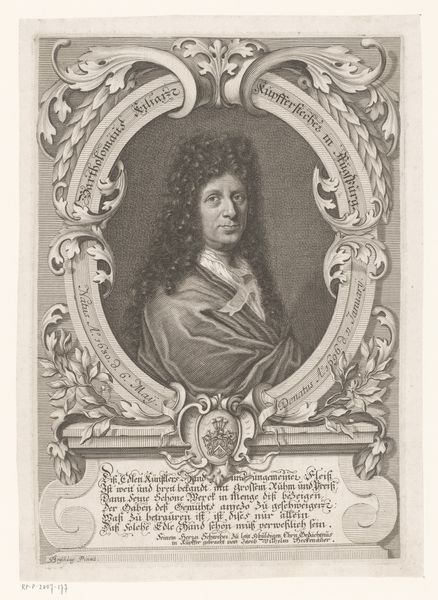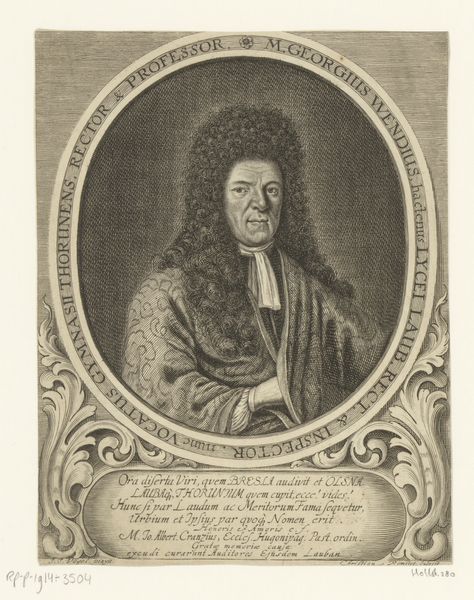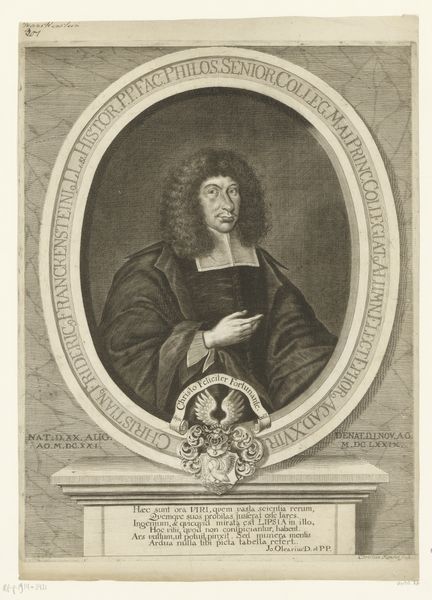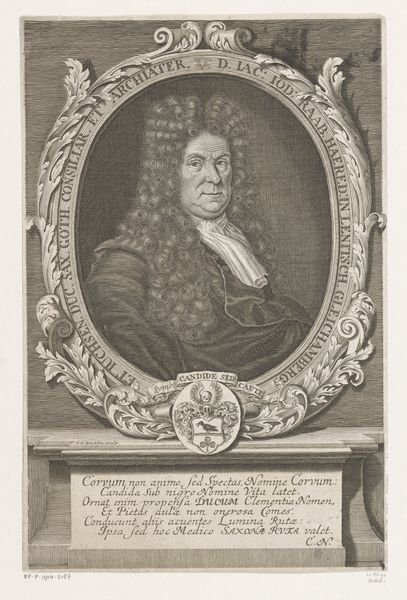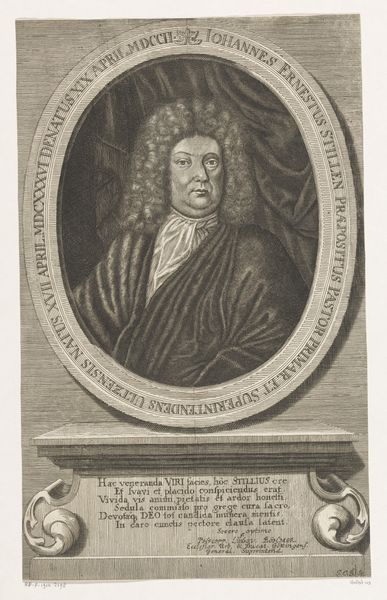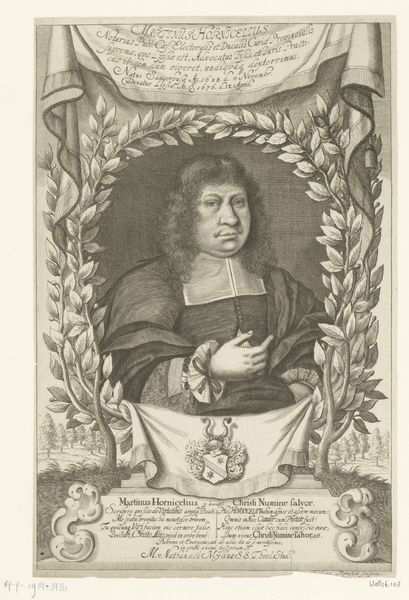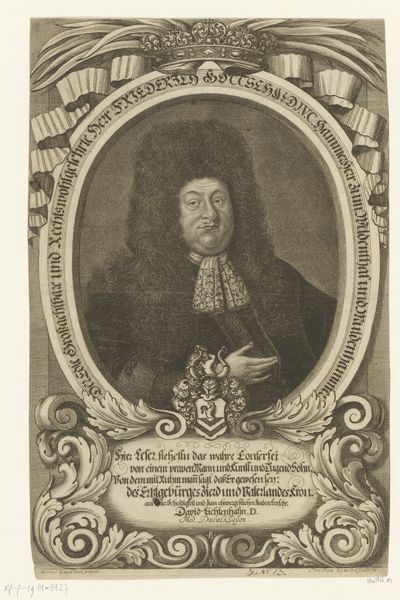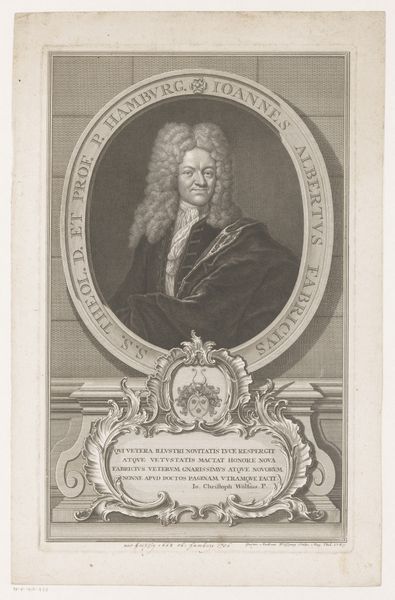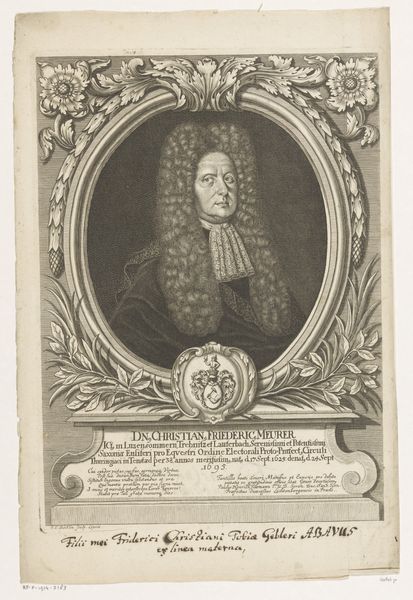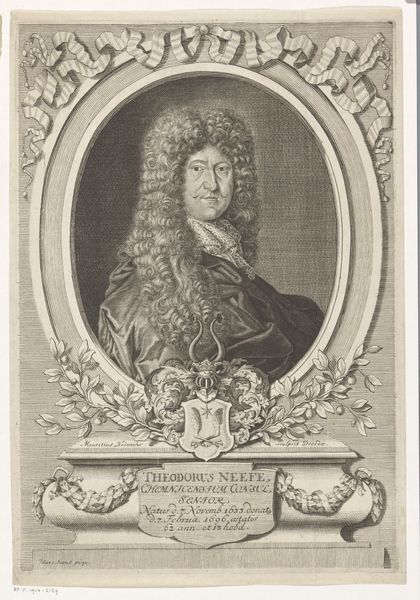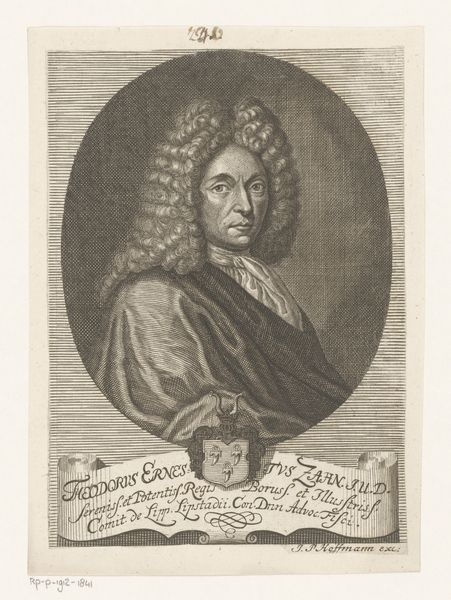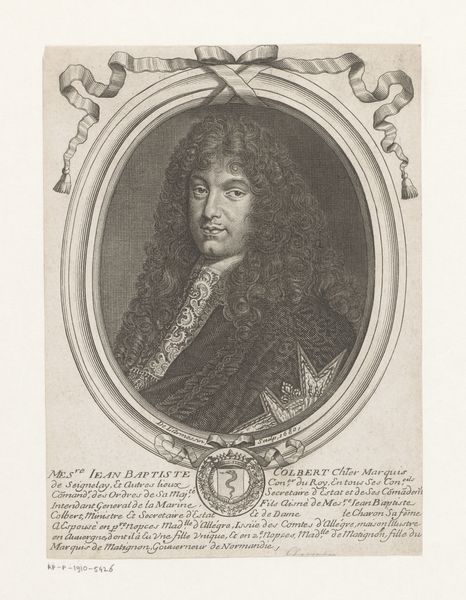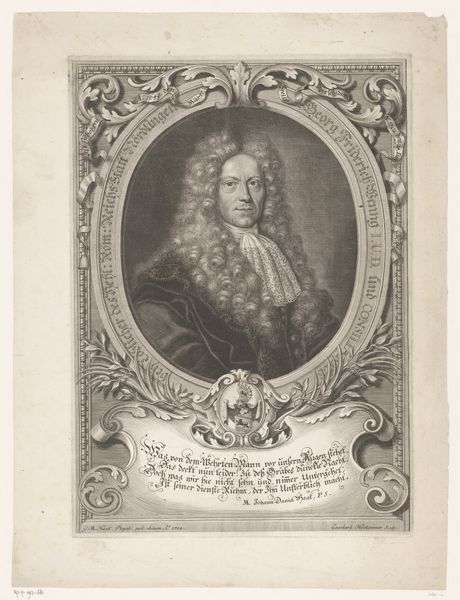
print, engraving
#
portrait
#
baroque
# print
#
figuration
#
line
#
history-painting
#
engraving
Dimensions: height 381 mm, width 277 mm
Copyright: Rijks Museum: Open Domain
Curator: Leonhard Heckenauer's 1699 engraving, "Portret van Nicolaus Poppe," currently residing at the Rijksmuseum, depicts its subject framed within an ornate, almost overwhelming border of leaves and scrolls. It’s very baroque. Editor: My initial reaction is to the texture of the image. It feels dense. There's such a build-up of line work – you can almost feel the pressure of the engraving tool as it carves into the copper plate. It strikes me as an act of repetitive labor, all to create this one likeness. Curator: And a significant likeness, indeed! The portrait commemorates Nicolaus Poppe. Poppe’s gaze is steady, a kind of intellectual authority underscored by his clerical collar. The ornamental cartouche displays not just his name and birth year but also a poem written to his life, a marker of his personal and public history all displayed as text surrounding his person. Editor: The means by which it was distributed—engraving—is critical. This portrait allowed Poppe's image, his essence, to circulate widely within a community and beyond. We're looking at a form of early mass media in the service of constructing a public persona, the very materiality contributing to his projected legacy. The elaborate border reinforces his position in a larger symbolic framework, which you might find intriguing from a psychological viewpoint. Curator: Exactly! The surrounding motifs certainly play into this: leaves symbolic of life, growth, memory. The poem also offers a eulogy. A way of culturally preserving this minister. It speaks of virtue and enduring influence and implies how those values outlive him, and endure through an object. Editor: Thinking about it further, the very act of repeated printing would have subtly altered each impression. It wasn’t simply a pure transmission; each print bears the mark of the materials themselves – paper, ink, plate, as well as the skill, labor, and small errors that add layers of nuance. That process created uniqueness. Curator: So, ultimately we see how images work not only through inherent visual cues and iconographies but by way of how those depictions continue in new, unforeseen, ways. Editor: Indeed. Thinking materially lets us appreciate not just the final "image" but all the complex actions and resources required to deliver the portrait across social networks, both then and now.
Comments
No comments
Be the first to comment and join the conversation on the ultimate creative platform.
